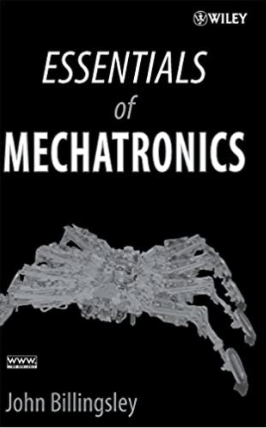2010م - 1444هـ
Essentials of Orthognathic
Surgery, Second Edition
Johan P. Reyneke
Table of Contents
Title Page
Copyright Page
Preface to the Second Edition
Preface to the First Edition
chapter 1 - Principles of Orthognathic Surgery
chapter 2 - Systematic Patient Evaluation
chapter 3 - Diagnosis and Treatment Planning
chapter 4 - Basic Guidelines for the Diagnosis and Treatment of Specific Dentofacial
Deformities
chapter 5 - Surgical Technique
Index
Preface to the Second Edition
T he positive reception of the first edition of Essentials of Orthognathic Surgery was
gratifying and can probably be ascribed to its concise and to-the-point approach. This
second edition pursues the same objectives of the first: to meet the needs of oral and
maxillofacial surgery and orthodontic residents in training as well as young clinicians
interested in orthognathic surgery. However, even experienced surgeons will find value
in the text to improve the management and treatment outcomes of their patients.
Because orthognathic surgery is a dynamic field influenced by a continual increase in
clinical experience, accumulation of scientific knowledge, and development of esthetic
acumen, an update was needed. In this edition, many sections have been added, revised,
and expanded, and the quality and clarity of the illustrations have been improved with
the use of full-color images and the addition of new figures and case reports.
The principles of the clinical evaluation of patients, analysis of diagnostic records,
treatment planning, cephalometric analysis, and orthodontic and surgical visual
treatment objectives remain the basic science of orthognathic surgery and have changed
very little. However, the approach to and interpretation of the data have evolved. It is
important to remember that cephalometric and soft tissue anthropometric analyses
represent average values of individuals who are considered to have normal facial
features. Some individuals with normal facial proportions may be unattractive while
others whose facial measurements fall outside normal ranges are strikingly beautiful.
Treatment planning is therefore a challenge that requires an artistic flair, an imagination,
and an ability to think originally and creatively. Orthognathic surgical planning should
be derived primarily from esthetic considerations based on the surgeon’s esthetic sense
as guided by the cephalometric data. The other two cornerstones of orthognathic
treatment are correcting occlusal and orofacial function and ensuring stability of
treatment results.
The section dealing with the rotation of the maxillomandibular complex has been
expanded. The geometry of its treatment planning is explained in depth, and the
expected soft tissue changes for clockwise and counterclockwise rotations at various
rotation points have been tabulated for easy reference. Moreover, the addition of
several new case studies helps to illustrate the concepts of this unique surgical design.
The discussion of anterior open bite dentofacial deformities has been updated in
keeping with new philosophies regarding their diagnosis and correction. Most notably,
this section presents the correction of an anterior open bite by means of mandibular
surgery and includes indications for this approach as well as reasons why this method
of treatment has proven to be stable despite previous assumptions to the contrary.
More than a decade following the introduction of distraction osteogenesis of the
bones of the face, this concept of treatment is finally finding its rightful place in facial
reconstruction. While not the replacement for orthognathic surgery that some clinicians
had predicted, this treatment modality has become an important adjunct to traditional
craniofacial and orthognathic surgical procedures. The principles of distraction
osteogenesis and its indications for implementation are discussed, and new case studies
demonstrate this method of lengthening facial bones and its role in orthognathic
surgery.
The procedure of choice for setting the mandible back—especially for large setback
procedures—is the intraoral vertical mandibular ramus osteotomy. Thus, a detailed
description of this procedure was added to the chapter on surgical technique.
In the words of George Lois, “Creativity can solve almost any problem. The creative
act, the defeat of habit by originality, overcomes everything.” I hope this new edition
will further empower young orthognathic surgeons and orthodontists to develop their
creativity, expand their vision, and apply their imagination in the treatment of their
patients. It is essential to remember that we do not treat teeth but rather a person who
has teeth and that in changing the faces of our patients we are also certainly changing
their lives.
Last, I would like to express my sincere gratitude to Quintessence Publishing, which,
after the success of the first edition, had the confidence to publish a second edition. It
was a privilege to work again with the true professionals at Quintessence.
***************
The revised edition of this popular book presents a concise approach to the diagnosis and surgical treatment of patients with dentofacial deformities. In-depth chapters detail the treatment process of patient evaluation, analysis of diagnostic records, development of a visual treatment objective, treatment planning, and surgical management. The most common surgical techniques are featured in step-by-step protocols. Although the basic science of orthognathic surgery remains unchanged, the contents of this book have been updated to reflect the most current interpretation of diagnostic data, including expanded discussions of the rotation of the maxillomandibular complex and anterior open bite dentofacial deformities as well as new sections on distraction osteogenesis and the intraoral vertical mandibular ramus osteotomy. Full-color illustrations and comprehensive case reports complement the text and demonstrate treatment outcomes. With its emphasis on successful and predictable results, this excellent surgical guide is ideal for residents and a valued resource for experienced surgeons.
Essentials of Orthognathic
Surgery, Second Edition
Johan P. Reyneke
Table of Contents
Title Page
Copyright Page
Preface to the Second Edition
Preface to the First Edition
chapter 1 - Principles of Orthognathic Surgery
chapter 2 - Systematic Patient Evaluation
chapter 3 - Diagnosis and Treatment Planning
chapter 4 - Basic Guidelines for the Diagnosis and Treatment of Specific Dentofacial
Deformities
chapter 5 - Surgical Technique
Index
Preface to the Second Edition
T he positive reception of the first edition of Essentials of Orthognathic Surgery was
gratifying and can probably be ascribed to its concise and to-the-point approach. This
second edition pursues the same objectives of the first: to meet the needs of oral and
maxillofacial surgery and orthodontic residents in training as well as young clinicians
interested in orthognathic surgery. However, even experienced surgeons will find value
in the text to improve the management and treatment outcomes of their patients.
Because orthognathic surgery is a dynamic field influenced by a continual increase in
clinical experience, accumulation of scientific knowledge, and development of esthetic
acumen, an update was needed. In this edition, many sections have been added, revised,
and expanded, and the quality and clarity of the illustrations have been improved with
the use of full-color images and the addition of new figures and case reports.
The principles of the clinical evaluation of patients, analysis of diagnostic records,
treatment planning, cephalometric analysis, and orthodontic and surgical visual
treatment objectives remain the basic science of orthognathic surgery and have changed
very little. However, the approach to and interpretation of the data have evolved. It is
important to remember that cephalometric and soft tissue anthropometric analyses
represent average values of individuals who are considered to have normal facial
features. Some individuals with normal facial proportions may be unattractive while
others whose facial measurements fall outside normal ranges are strikingly beautiful.
Treatment planning is therefore a challenge that requires an artistic flair, an imagination,
and an ability to think originally and creatively. Orthognathic surgical planning should
be derived primarily from esthetic considerations based on the surgeon’s esthetic sense
as guided by the cephalometric data. The other two cornerstones of orthognathic
treatment are correcting occlusal and orofacial function and ensuring stability of
treatment results.
The section dealing with the rotation of the maxillomandibular complex has been
expanded. The geometry of its treatment planning is explained in depth, and the
expected soft tissue changes for clockwise and counterclockwise rotations at various
rotation points have been tabulated for easy reference. Moreover, the addition of
several new case studies helps to illustrate the concepts of this unique surgical design.
The discussion of anterior open bite dentofacial deformities has been updated in
keeping with new philosophies regarding their diagnosis and correction. Most notably,
this section presents the correction of an anterior open bite by means of mandibular
surgery and includes indications for this approach as well as reasons why this method
of treatment has proven to be stable despite previous assumptions to the contrary.
More than a decade following the introduction of distraction osteogenesis of the
bones of the face, this concept of treatment is finally finding its rightful place in facial
reconstruction. While not the replacement for orthognathic surgery that some clinicians
had predicted, this treatment modality has become an important adjunct to traditional
craniofacial and orthognathic surgical procedures. The principles of distraction
osteogenesis and its indications for implementation are discussed, and new case studies
demonstrate this method of lengthening facial bones and its role in orthognathic
surgery.
The procedure of choice for setting the mandible back—especially for large setback
procedures—is the intraoral vertical mandibular ramus osteotomy. Thus, a detailed
description of this procedure was added to the chapter on surgical technique.
In the words of George Lois, “Creativity can solve almost any problem. The creative
act, the defeat of habit by originality, overcomes everything.” I hope this new edition
will further empower young orthognathic surgeons and orthodontists to develop their
creativity, expand their vision, and apply their imagination in the treatment of their
patients. It is essential to remember that we do not treat teeth but rather a person who
has teeth and that in changing the faces of our patients we are also certainly changing
their lives.
Last, I would like to express my sincere gratitude to Quintessence Publishing, which,
after the success of the first edition, had the confidence to publish a second edition. It
was a privilege to work again with the true professionals at Quintessence.
***************
The revised edition of this popular book presents a concise approach to the diagnosis and surgical treatment of patients with dentofacial deformities. In-depth chapters detail the treatment process of patient evaluation, analysis of diagnostic records, development of a visual treatment objective, treatment planning, and surgical management. The most common surgical techniques are featured in step-by-step protocols. Although the basic science of orthognathic surgery remains unchanged, the contents of this book have been updated to reflect the most current interpretation of diagnostic data, including expanded discussions of the rotation of the maxillomandibular complex and anterior open bite dentofacial deformities as well as new sections on distraction osteogenesis and the intraoral vertical mandibular ramus osteotomy. Full-color illustrations and comprehensive case reports complement the text and demonstrate treatment outcomes. With its emphasis on successful and predictable results, this excellent surgical guide is ideal for residents and a valued resource for experienced surgeons.
يمكنك الاستمتاع بقراءة كتاب
Essentials of Orthognathic Surgery, Second Edition
اونلاين وعلى الموقع الخاص بنا من خلال الضغط على زر قراءة بالاسفل
كتاب Essentials of Orthognathic Surgery, Second Edition يمكنك تحميله من خلال الدخول الى صفحه التحميل من
صفحة تحميل كتاب Essentials of Orthognathic Surgery, Second Edition PDF
او يمكنك التحميل المباشر من خلال الضغط

بعض الكتب المشابهة لـ Essentials of Orthognathic Surgery, Second Edition



